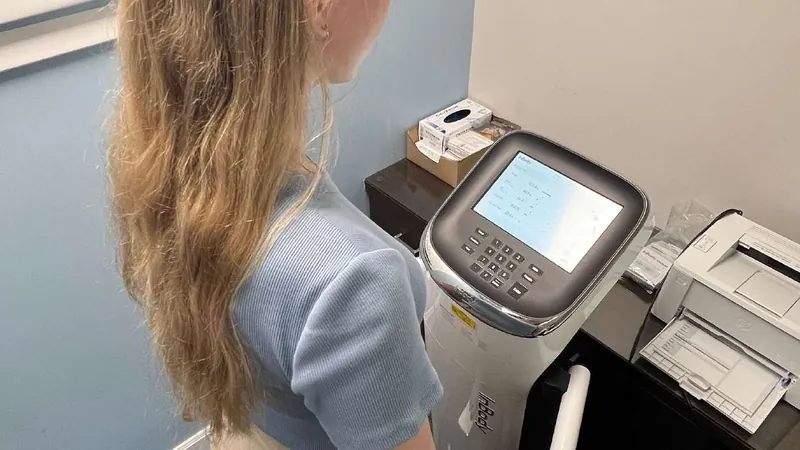
BMI is Outdated! Discover the New Way to Measure Your Health Risks!
2025-06-29
Author: Jia
The Flaws of BMI: Why It's Time for a Change
In the world of weight measurement, BMI (Body Mass Index) has long been the go-to acronym, but it’s starting to earn a bad reputation. This common tool is used by health professionals to quickly identify patients at risk for severe health issues based on their height and weight. However, there's a growing concern that BMI is simply not cutting it.
The Limitations of BMI
BMI calculates health risk by dividing weight by height squared, categorizing individuals into various ranges: underweight, healthy, overweight, and obese. While it may offer a general overview for populations, it fails at the individual level. For instance, those with a muscular build can be misclassified as at-risk, while older adults with muscle loss might appear healthier than they are. This means BMI can either alarm someone unnecessarily or downplay real health risks.
Introducing Bioelectrical Impedance Analysis (BIA)
Enter Bioelectrical Impedance Analysis (BIA), a revolutionary alternative that offers a much clearer picture of health. This cutting-edge method uses tiny electrical currents to gauge not just body fat but also muscle mass and water weight. Basically, it can provide insights that BMI simply can't.
A Groundbreaking Discovery!
A recent study led by Arch Mainous III reveals astonishing findings: body fat percentage—as determined by BIA—predicts mortality risks far better than BMI does. In fact, young adults aged 20 to 49 with high body fat were a staggering 262% more likely to die from heart disease compared to their healthier counterparts. This critical information often goes unnoticed under BMI assessments, highlighting the urgent need for a shift in how we view body composition.
Why Are We Still Using BMI?
Despite its shortcomings, BMI remains prevalent because it is inexpensive and easy to administer. However, alternatives like DEXA scans, which offer the most accurate body composition analyses, are prohibitively expensive for many patients. But BIA presents a viable, cost-effective solution that can change the landscape of health assessments.
The Call to Action for Healthcare Providers!
The data from the study analyzed over 4,000 participants and compared their composition to mortality rates, revealing that BIA results in a much clearer understanding of health risks. Health professionals are now urged to embrace bioelectrical impedance analysis to better assess patients, allowing for early interventions that can significantly improve outcomes.
Time for a Health Revolution!
As science progresses, it's clear that ignoring advancements like BIA in favor of outdated methods like BMI is a disservice to patient care. With compelling evidence to support this change, we could be on the brink of a health revolution. Don't let old metrics hold you back—embrace the future of health measurement!


 Brasil (PT)
Brasil (PT)
 Canada (EN)
Canada (EN)
 Chile (ES)
Chile (ES)
 Česko (CS)
Česko (CS)
 대한민국 (KO)
대한민국 (KO)
 España (ES)
España (ES)
 France (FR)
France (FR)
 Hong Kong (EN)
Hong Kong (EN)
 Italia (IT)
Italia (IT)
 日本 (JA)
日本 (JA)
 Magyarország (HU)
Magyarország (HU)
 Norge (NO)
Norge (NO)
 Polska (PL)
Polska (PL)
 Schweiz (DE)
Schweiz (DE)
 Singapore (EN)
Singapore (EN)
 Sverige (SV)
Sverige (SV)
 Suomi (FI)
Suomi (FI)
 Türkiye (TR)
Türkiye (TR)
 الإمارات العربية المتحدة (AR)
الإمارات العربية المتحدة (AR)